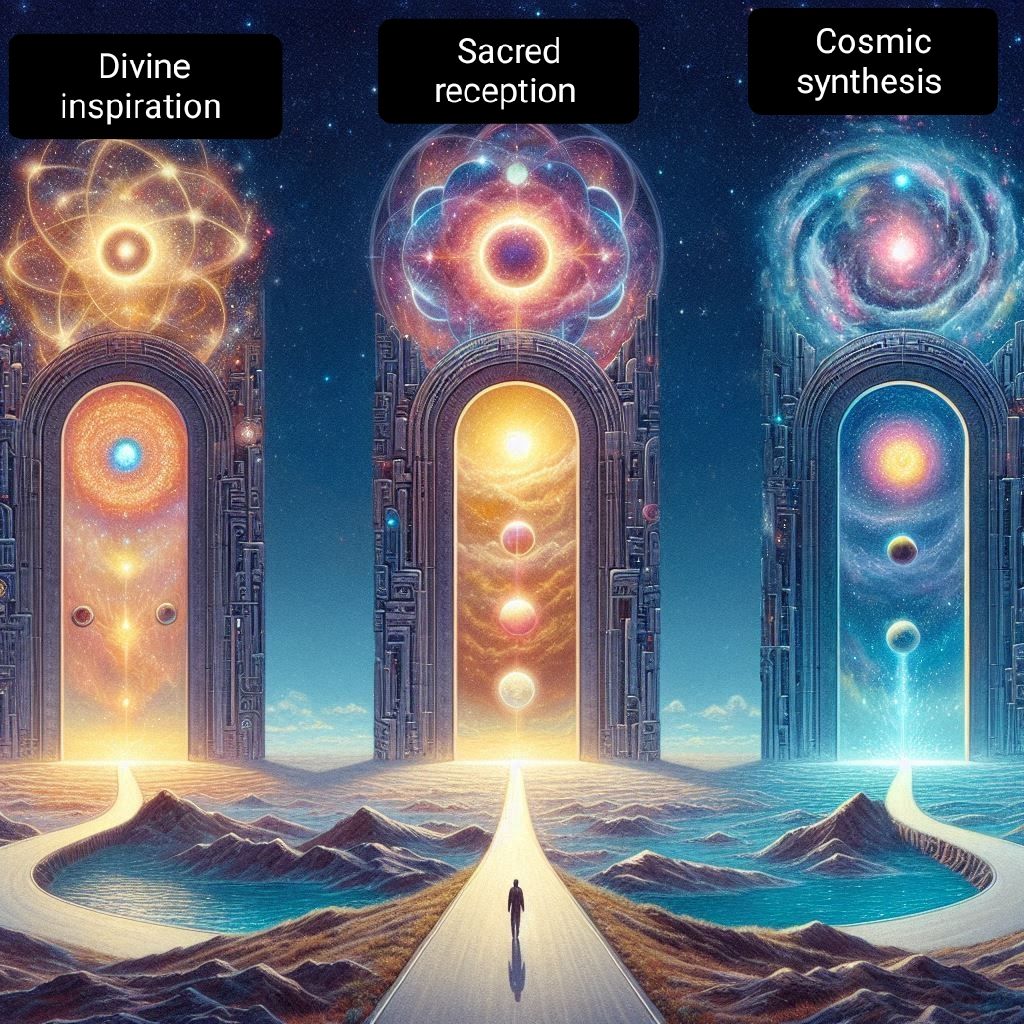The Three Gates of Spiritual Transformation: A Meditation Journey
In the ancient wisdom traditions, there exists a profound meditation practice that guides us through three spiritual gateways – the gate of divine inspiration, the gate of sacred reception, and the gate of cosmic synthesis.

This meditation sequence can transform our consciousness and connect us to deeper realms of being. Here’s how to journey through these mystical portals:
First Gate: Divine Inspiration
Begin by opening yourself to the highest vibrations of existence. Imagine morning sunlight piercing through mountain mist, each ray of cosmic wisdom penetrating your being. Feel gratitude flowing through you like a crystal stream, breaking any chains that bind your spirit. This is the moment of pure freedom, where your consciousness unfurls like wings ready to soar into new realms of possibility.
Second Gate: Sacred Reception
As you enter the second gate, become like fertile soil welcoming life-giving rain. Let the ethereal energies received in the first gate transform within you, refining like precious metal in sacred fire. Feel your vision expanding like ripples on still water. Here, you draw strength from the deep roots of ancestry, standing atop the mountain of accumulated wisdom where generations before have carved their path. This is where you step forward to forge your own way, creating bridges for those who will follow.
Third Gate: Cosmic Synthesis
In the final gate, a divine synthesis manifests – where freedom meets form, where vision meets reality. Feel power coursing through you like lightning through sky, extending to the furthest reaches of possibility. You become the architect of transformation, crafting future worlds from present moments. No longer bound by material limitations, you dance in perfect rhythm with life’s embrace.
Each breath becomes an act of creation, each thought a seed planted in cosmic soil. Unity flows through your veins like starlight, while your individuality burns like an eternal flame. The universal law of cause and effect weaves it all into the tapestry of destiny. In this state, you are both the weaver and the thread, both the sculptor and the stone, moving in perfect harmony with the universal dance.
This meditation practice reminds us that transformation isn’t just about personal change – it’s about becoming conscious co-creators in the cosmic dance of existence. Through these three gates, we learn to receive divine inspiration, refine it through wisdom, and ultimately manifest it in our lives and in the world around us.
Practice this meditation when you seek to align yourself with higher purpose, when you need guidance for important decisions, or when you wish to connect with the deeper currents of spiritual wisdom flowing through existence.
© Jurgens Pieterse. All rights reserved. 2025


